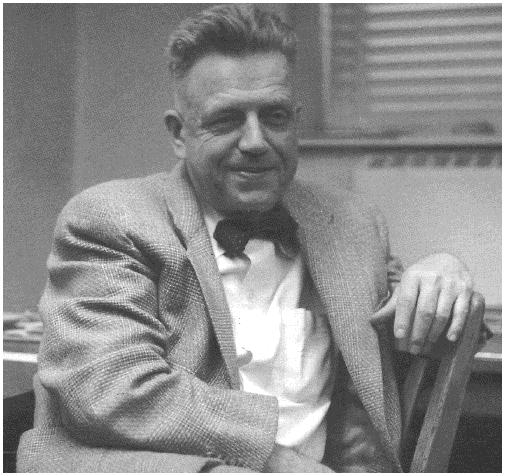Sex the Measure
Of All Things
Jonathan
Gathorne-Hardy
(Indiana University Press)

Kinsey is fine reading, even though some of the facts come under the "I don't think I really want to know" department (don't even bring up Kinsey and his toothbrush). And some of the quotes are more than a little revealing. For instance, C. A Tripp who once said that Kinsey saw sex "as a factory of affection." Or this, on one of Kinsey's key, early grants --- $120,000 from the Rockefeller Foundation in 1946 ---
- What is astonishing is that all this really rested on and resulted from two intangible factors --- the power of Kinsey's personality and the gripping nature of his subject. Kinsey hadn't published anything of consequence on [sexuality] yet. There had been nothing in the nature of "peer review." Gregg [Director of the Foundation] despite his Board's frequent and intense anxiety that the whole thing was "decent," or that Kinsey was pursuing ridiculously large numbers (which he was), had, he told Kinsey, simply presented most of his extraordinary findings to the Rockefeller Board and they, like everyone else, had been completely fascinated. It was almost as if they paid to find out --- what will he discover next?
 Whenever any of the board members visited with him in New York or Bloomington, Kinsey asked for, and almost always got, their intimate, personal sexual histories.
Whenever any of the board members visited with him in New York or Bloomington, Kinsey asked for, and almost always got, their intimate, personal sexual histories.
Part of the wonder of the book is Gathorne-Hardy's writing style. Here he is on Kinsey's agonized view of the Anglo-Saxon view of homosexuality:
- It is here, above all, sharpened obviously by autobiography, that there is passion in the Report. Kinsey had seen how these men had been harmed by society for their sexuality --- he had seen them in prison, blackmailed, made to feel guilt and anxiety, even made outcasts, and it had made him very angry. This never led him to falsify his figures; it did dictate his presentation.
It is not, ultimately, a happy story. Kinsey's investigation into and publication of a second study --- of female sexuality --- was far more controversial than the first report on males. This, plus the workings of the usual American Morality Police, and financial agonies --- his foundation support melted away in the early to mid-1950s --- made Kinsey somewhat paranoid, and more and more haunted in the months before he died in August of 1957.
But, even now, so many years after the fact, so many of us will never forget the power of the first Report. The summer it came out I --- all of fifteen --- read it at a sitting. Such excitement ... and I ain't talking about that excitement.
What came to be called The Kinsey Report read easily. A subject heretofore written about icily (or vulgarly) was here discussed clearly, even poetically. Despite the charts and the footnotes, Kinsey, in his way, was probably as fine a stylist as Freud. And I do fondly remember, almost sixty years later, me, then, in the sweet summer, lying in bed, reading it: not thumbing through it, but reading it in toto; and, thinking, as I did so, "Ah." And "So." And, "Yes, yes, yes ... of course ... yes!"